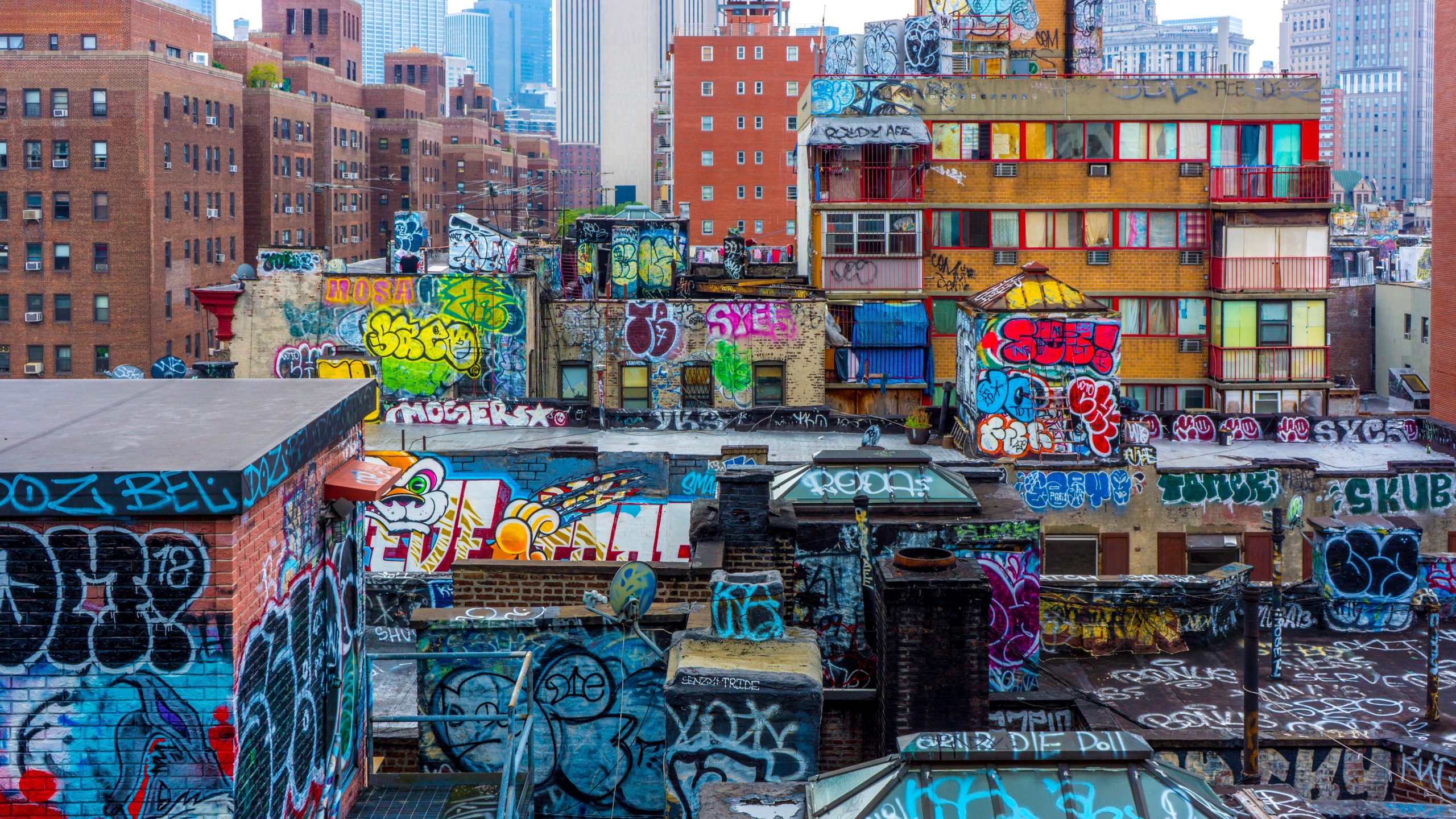
What type of street art are we entitled to today? And what can it give to our cities and their residents?
Billboard
Skyscrapper
Halfpage
Graffiti and street art oscillate in a fleeting space between illegality and establishment. They oscillate between social criticism and artistic aesthetics. They make the city a gallery of current events. And they render façades into political canvases, turn public spaces into the Agora. Banksy once proclaimed that graffiti is the art that turbo capitalism had earned. This raises the question: What type of urban art are we entitled to today? And what can it give to our cities and their residents?
Highly-Political Art
What if a bare wall could speak? If thoughts, fears and hopes were burnt into the concrete? If a wall could make the opinion of thousands visible? And in doing so transform a public space into an arena for discussion, the birthplace of freedom? Utopia? Not at all. This is exactly what happened at the Berlin Wall, the stage for the East-West conflict prior to the fall of the Iron Curtain. Even though painting was not allowed at the Wall, graffiti writers and street artists such as Keith Haring used spray paint to immortalise themselves on the Western side of the Wall during the 1980’s. They protested the political circumstances at the time. Street art and graffiti are highly-political; the artists are seismographs of our times. Banksy has been causing a stir for years with precisely this.
Medium Rectangle
Halfpage
Claiming façades
Street art and Graffiti lend identity to urban spaces. They lay claim to façades. They raise topics and thus create places where people can communicate with each other and express their opinion freely and openly. Their social importance lies precisely in their anonymity and partial illegality. The graffiti writer and street artist inserts him/herself into the urban cosmos without asking – with only his conscious as his guide. He or she appoints him/herself judge over the façades and creates sovereign space of his/her own. He or she paints in layers and determines the face of the city alongside builders, architects, urban planners and landscape architects. By sending information to a public audience within the urban space, the artist not only manifests his status as Homo aestheticus but also as Zoon Politikon.
The differences between Street Art and Graffiti
The art form of graffiti writing, where letters and characters predominate, started its global advance in the USA during the 1960’s. It remains the voice of youth subcultures to this day. During the 1990’s, it evolved into street art, a more figurative form of art that employs more traditional artistic techniques such as templates (stencils), prints and painting. The fleeting nature of both art forms is not an impediment but rather the means to an end. Only by virtue of its ephemeral nature is urban art able to take its cue from the pulse of the times and portray what is moving society at a specific point in time.
Street art booms during times of crisis in particular and points a finger at current societal and political problems. It is thus a mouthpiece and voice for those whose voice is not heard every day in the magazines and news programs of the world.
Medium Rectangle
Halfpage
Street Art and Graffiti: Seismographs of our times
Unemployment, bailouts, debt, injustice, wars and crises: all of these issues motivate graffiti writers and street artists in cities all over the world to broadcast their fears, their lack of perspective and hope on the façades and thus give voice to their anger. They use their art to call attention to refugee crises, terrorism, slavery, environmental pollution, video surveillance, racism, gentrification and rising rents. Thus they contribute to societal opinion formation and self-reflection. They can even do more.
By annexing urban surfaces and walls, they call ideas of ownership into question and exercise criticism of the privatization of cities. Their works raise the question of who the cities belong to. The residents? Investors? The state? This type of art is needed all the more when affordable living space gives way to luxury flats and public space is lost to investors. Even the mere act of illegal spraying, painting and gluing pulls society out of its comfort zone.
Collaborative projects
However, how political, rebellious and uncomfortable can street art and graffiti writing remain in future? All the more given the fact that its own commercialization is accelerating? In 2019, Italian architect Carlo Ratti unveiled the world’s first crowdsourced graffiti, designed by thousands of people, and painted by a swarm of drones in the city of Turin, Italy. Imagine that every city dweller could be part of a participatory and collaborative project, could use street art, use graffiti to transform the city into a discussion forum for everyone, into a better place? The city could become more colorful, diverse and democratic.
Interested in public art? Read here about the Emscher Art Trail.
















